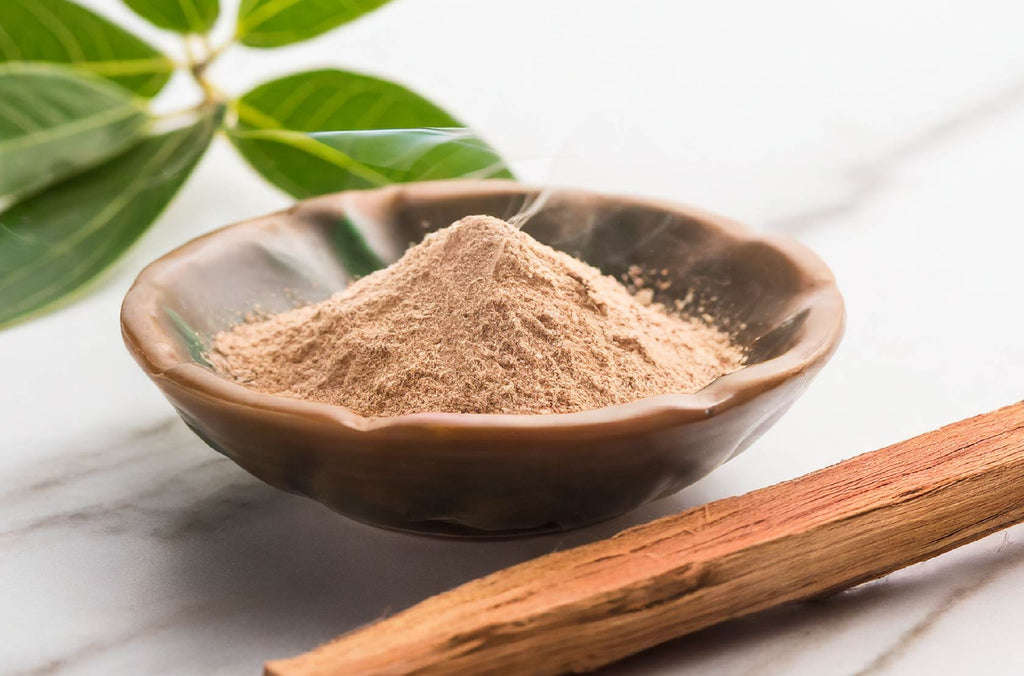1. What is the aromatic profile and appearance of Sandalwood?
Sandalwood, renowned for its rich and woody fragrance, comes from the heartwood of the Santalum tree. The aromatic profile of sandal wood is a harmonious blend of warm, sweet, and earthy notes. People often describe its scent as creamy, with a subtle hint of spice, which makes it a prized ingredient in perfumery. The wood itself is dense and durable, featuring a distinct yellow to brown colour.

2. Where does SANDALWOOD come from?
It primarily originates from the Santalum genus, with notable species like Santalum album and Santalum spicatum. Native to regions such as India, Australia, and Indonesia, the tree thrives in tropical climates. India, particularly the Mysore region, has historically produced the finest quality sandalwood. The extraction process involves harvesting the heartwood, where the essential oil resides, through sustainable and ethical methods to preserve these precious resources.

2. Why is SANDALWOOD so expensive?
The intricate extraction process and the tree’s slow growth drive the exorbitant price of sandalwood oil. Obtained from the heartwood of Santalum trees, especially the rare Indian Mysore variety, it demands meticulous cultivation, taking decades to mature. As overharvesting poses environmental threats, sustainable practices limit yields. Furthermore, the heartwood’s essential oil concentration is minimal, necessitating large quantities for extraction. Geopolitical factors, such as export restrictions in countries like India, contribute to scarcity. The oil’s unparalleled fragrance, coupled with its diverse applications in perfumery, skincare, and traditional medicine, fuels high demand, solidifying sandalwood oil as a precious and costly commodity.
3. Why Is SANDALWOOD so valuable in perfumery?
The value of santal in perfumery is multifaceted. Its complex and sophisticated aroma serves as a base note, contributing depth and longevity to fragrances. It possesses a unique ability to enhance and harmonize the overall composition of a perfume, making it a staple in many iconic blends. Beyond its olfactory appeal, the natural fixative properties of sandalwood help in stabilizing and preserving other volatile fragrance components, ensuring a longer-lasting scent.

4. In what perfume blends do people commonly find it?
Santal finds its place in a variety of perfume compositions, playing a crucial role in both men’s and women’s fragrances. It is a key component in oriental and woody fragrances, often paired with floral or spicy notes to create a balanced and alluring scent. Its versatility allows it to seamlessly blend with a wide range of ingredients, making it a favourite among perfumers crafting anything from sensual and warm evening scents to fresh and invigorating daytime fragrances.
5. What Are the health benefits OF SANDALWOOD?
Beyond its aromatic allure, sandalwood offers a plethora of health benefits recognized for centuries. The essential oil derived from it has anti-inflammatory, antiseptic, and astringent properties. People have traditionally used it in aromatherapy to induce calm and relaxation, making it a popular choice for meditation and stress relief. Its skincare benefits are notable, as it soothes and moisturizes the skin, making it an ideal ingredient in cosmetics.

6. What Molecules are Unique for its therapeutic and scent Profile?
The primary constituents responsible for its therapeutic and aromatic qualities include santalol, santyl acetate, and santalene. These molecules give the wood its distinctive fragrance and may offer therapeutic properties.Santalol, in particular, contributes to the calming and anti-anxiety effects of sandalwood, making it a sought-after ingredient in aromatherapy and holistic wellness practices.
Summary: Why Is SANDALWOOD so popular?
In summary, the popularity of sandalwood can be attributed to its remarkable combination of olfactory charm and holistic benefits. Its aromatic profile, characterized by warm and creamy notes, lends an unparalleled sophistication to perfumes, making it a staple in the fragrance industry. Originating from regions with a rich history of sandalwood production, its scarcity and sustainable harvesting practices add to its allure.
The intrinsic value of it extends beyond perfumery, as it offers a myriad of health benefits. From its anti-inflammatory properties to its ability to induce relaxation, it has become a symbol of wellness and tranquillity. The unique molecules within sandalwood, such as santalol, contribute not only to its enticing scent but also to its therapeutic potential.
In the realm of perfumery, it remains an indispensable and timeless ingredient, enriching compositions with its depth and longevity. As a testament to its enduring popularity, sandalwood continues to captivate the senses, proving that its allure is not just a fragrance but a sensory journey through time and tradition.
Sandalwood in Prosody London’s natural perfume
In Prosody London’s aromatic repertoire, “Mocha Muscari,” “Oud Octavo,” and “Santal Foy” stand as olfactory masterpieces, each invoking the enchantment of sandalwood in a unique symphony. “Mocha Muscari” weaves the warmth of sandal wood with rich mocha, creating a decadent fusion. “Oud Octavo” blends the opulence of oud with the soothing embrace of sandal wood, a harmonious dance of exotic allure. Meanwhile, “Santal Foy” elevates the fragrance with a refined touch, as sandalwood takes center stage in this timeless composition. Together, these scents from Prosody London’s range epitomize the brand’s commitment to sustainable luxury and transcendent olfactory experiences.



